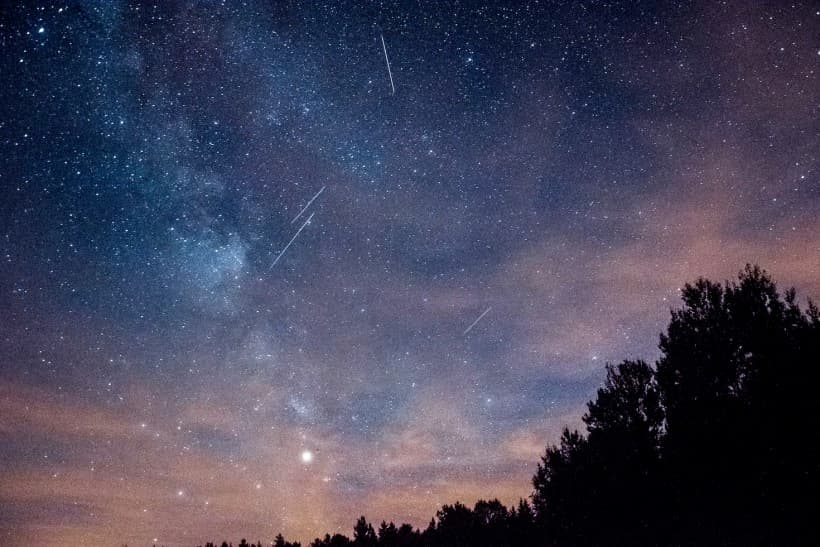Interesting timing...

Eta Aquarid meteor shower peaks this weekend: How to watch
This annual meteor shower is created by debris left by Halley's comet as it makes its roughly 76-year orbit of the sun. The annual Eta Aquarids meteor shower peaks on Friday (May 5) and Saturday (May 6), offering skywatchers the opportunity to see debris from Halley's Comet as it enters Earth's atmosphere at incredible speeds and burns up. This year the meteor shower began lighting up the night sky over Earth on April 19 and will last until May 28, so even after its peak there will be plenty of opportunity to catch fireballs streaking through the sky.
Interestingly the penumbral lunar eclipse on the night of May 5 happened close to the peak of the η-Aquariid or Eta-Aquariid meteor shower. Interestingly, our planet usually passes through the debris of Halley twice a year, the other time happens in October, when it creates the Orionid meteor shower. The Eta Aquariid meteor shower is typically active between April 19 and May 28 every year and this year, it will peak on the nights of May 6 and May 7, according to Time and Date. https://indianexpress.com/article/technology/science/eta-aquariids-meteor-shower-peak-8594998/
Anyone venturing out to spot a meteor with this year’s Aquariids show could see up to 20 meteors per hour, but you’ll have to be up early — the best times to try to see a meteor will be just before dawn on Friday, Saturday or Sunday. The event’s estimated peak time is at 11 a.m. ET Saturday. Alongside the shower comes the May flower moon, the first full moon of the “month of flower,” and its almost perfect alignment with the sun and Earth. That alignment will create what is known as a penumbral lunar eclipse, which is when the moon enters Earth’s outer shadow. This event will be between 11:13 a.m. and 3:31 p.m. ET Friday but won’t be visible in the Americas because the moon isn’t up then. But it will cause a dimming of the lunar surface for those in Africa, Asia and Australia. How to view a lunar eclipse, full 'flower moon' and meteor shower this weekend - East Idaho News
The 2023 Lyrid meteor shower peaks on the night between May 5 and 6, 2023. The full Moon that night will make this shower a bit more difficult to see since the Moon's light might wash out the dimmer streaks of light, but you can still expect a good show. The Leonid meteor shower 2025: How to watch | The Planetary Society
Video about May Celestial Signs:

